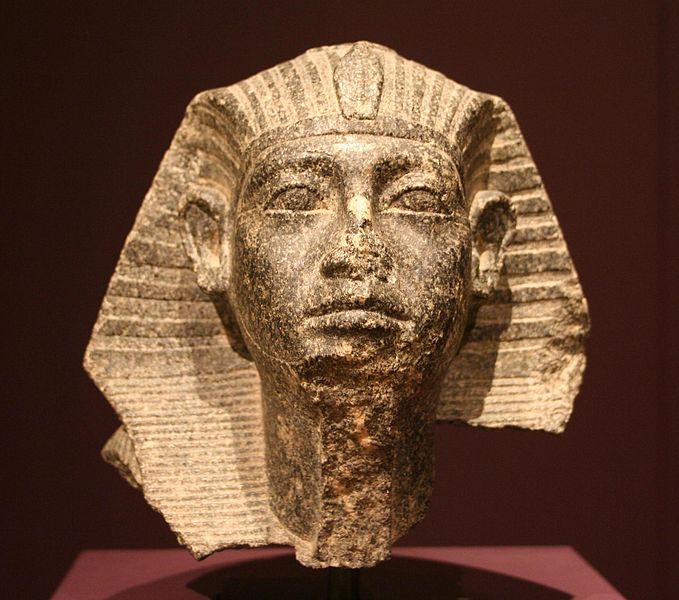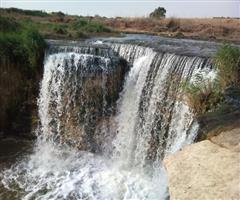The Middle Kingdom of Egypt

Pharaoh Mentuhotep was the one, who reunited Upper and Lower Egypt again 2040 BC. Along with the reunification, Egypt began to prosper again. Trading flourished in the Middle Kingdom. State coffers were filled, literature and arts were sponsored. The Pharaohs regained authority in the country through following principals of good governance. Because they were only accepted by the population if they ruled wisely and justly. A modern administration was created, taxes were raised and armies built up. Again, wars were waged to extend the empire’s borders. The Egyptian armies marched into Sinai and Nubia and subjected their rulers. Both countries became colonies of Egypt. The empire of the Pharaos experienced great political stability.
Thebes – the Capital of the Middle Kingdom

With Thebes, the unified empire founded a new capital. The city was located further south than the old capital Memphis; quite accurately, it was placed in the middle of Lower and Upper Egypt. Thus, both empires could develop equally around the new centre. On the eastern riverside of Thebes, the realm of the living extended. It was here, where royal palaces, administration buildings, shops and large temples emerged. On the left Nile riverside, on the western side, was the realm of the dead. The Egyptians believed that the souls of the dead were drawn to the west, in the direction of the setting sun. Because life after death meant so much to the Egyptians, they built the tombs and temples just as luxuriously as the houses of the living. With a size of 25 square kilometers, Thebes was a gigantic Moloch. The Luxor of today marks the centrum of the old Thebes; even today, the temples of Luxor and Karnak can be visited.
The Pharaohs conquer new Colonies

Sesostris I. is considered to be one of the most significant kings of the Middle Kingdom. He reigned for about 45 years. Sesostris craved power and was belligerent. He wanted to bring the gold mines of Nubia under Egyptian control. In his 18th regnal year, Sesostris dispatched an army as far as the 2nd cataract. He had border fortresses built to fight off enemies and had temples constructed to consolidate his claim to power. Sesostris III. is the pharaoh with the big ears, as you can see on the left side of the picture. The two-meter-tall giant conducted four campaigns against the peoples in the northeast of Egypt. He conquered regions around today’s Palestine and thus reached the highly coveted cedar woods, which were ideally suited for shipbuilding. His campaigns led him as far as Thrace, which was located on today’s Balkan Peninsula. The pharaohs still had pyramids built, but were no longer buried in them. They found their final resting place in the Valley of Kings. Their tombs, which were in secret chambers built into rocks, were only found in the last century. Many of those tombs are still hidden within and under those rocks.On the right see the head of Sesostris III.
The Egyptian farmers were clever irrigation experts

The Egyptian population increased and the country needed more food to provide for its people. The farmers had to raise their crops. So they began to water their fields during dry season. They built water retention reservoirs, dug canals around their fields and guided the Nile River water into them. Around the Faiyum Oasis in the Liberian Desert, big swamplands extended. It was here, where farmers drained the swamps and therefore gained new cropland.
The End of the Middle Kingdom

Mid-17th century BC, the land had been weakened by many ruler changes. The state was torn and seemed to be easy prey for foreign armies. Nomad tribes from the regions of Palestine and Syria invaded the north. They were the Hyksos. They had horses, war chariots and harnesses. Thus, they were able to use new combat techniques, which enabled them to overrun the Egyptians. For the first time, the Egyptians were inferior to other peoples. They were defeated in a surprise attack and came under the reign of the Hyksos. Until the 15th century, the Nomads ruled over the Egyptians; after almost 150 years the turning point arrived. The Egyptians used the same trick as the Romans would later use. They recreated the chariots of the Hyksos, copied their combat techniques and defeated the Nomads with their own weapons. Meanwhile, new troubles rose in the south. The Nubians regained their old strength and recaptured their former regions. Historians speak of a Second Intermediate Period. On the picture on the right you see Pharao Ahmose fighting against the Hyksos.

